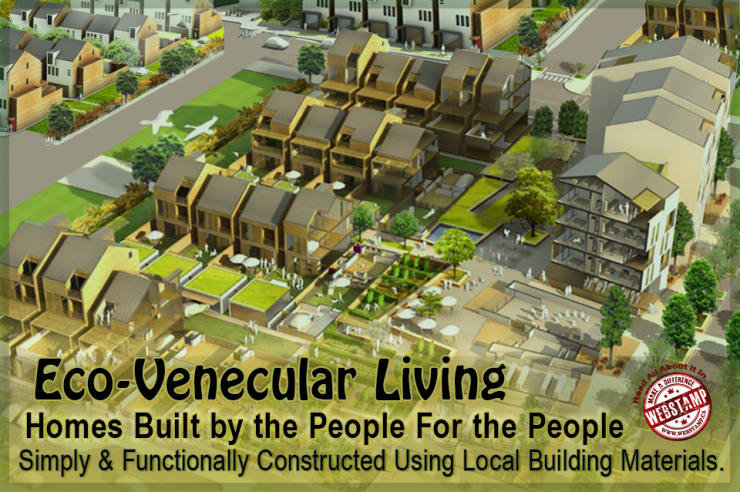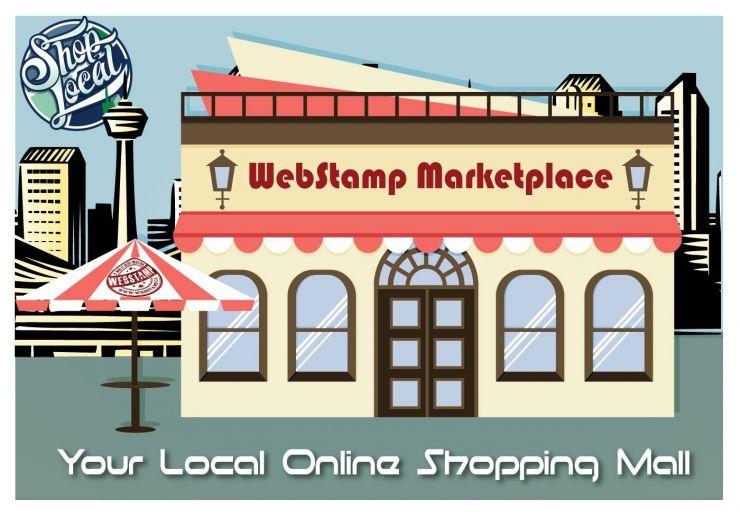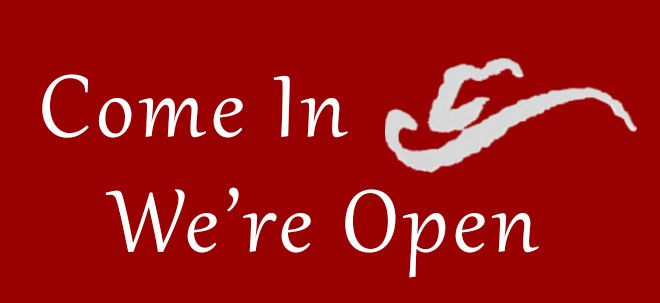WebStamp October 06, 2021
Eco-Vernacular Living
The dwellings we live in have changed over the last century. The average North American home has become larger to accommodate storing an overabundance of barely used items to make our lives easier. Many homes are also now equipped with many costly high-end appliances and expensive decor elements for providing extravagant convenience. All this excessive breathing room and luxury has made affording a home expensive and, in many cases, unaffordable or even unattainable.
Currently, the economic collapse brought about by pandemics and greedy commerce, climate change causing extreme weather disasters, and social conflicts have put affordable housing out of reach for many. The Canada Mortgage and Housing Corporation (CHMC) considers that households have a housing affordability problem if they are spending 30% or more of total before-tax household income on shelter expenses. According to Statistics Canada, one in ten Canadian households (1.6 million) are living in an unsuitable, inadequate or unaffordable dwelling.
Since the Great Depression, there have been many programs and projects developed to help low-income families attain affordable housing. Some programs have supplemented rent for low-income families while others provided incentives to own reasonable and appropriate housing. The rapidly rising shelter costs preventing many from acquiring an adequate, affordable, and suitable home has even made affordable housing a major election issue in the 2021 federal election.
A change in the way homes are designed and built is required so everyone can live safely and comfortably. A return to a vernacular architecture where homes are built by the people for the people is needed. These types of houses are constructed simpler with less emphasis on rules or aesthetics and more on creating something easy and functional using local building materials.
Building vernacular homes also bring other benefits besides affordability. Purchasing local materials benefits the local economy and keeps local people employed. There are reductions and savings on the environmental impact and costs associated with transportation. With vernacular houses being smaller, they are easier and cheaper to maintain and keep clean.
A shift towards building sustainable affordable homes is required but also building vernacular self-sustainable communities. Building smaller homes, utilizing the basement in bi-level houses as living space, and tiny yards compensated with green rooftop gardens is only part of the solution. Each block of homes should have a community garden where each home shares the effort to reduce the cost of living. In existing communities, each house could have a garden with a specific crop(s) that is shared with the neighbourhood. The homes in the community need to be integrated and interlinked using a cooperative system to share resources.
Not everyone needs all the tools and have the expertise to maintain their dwelling as long as neighbours cooperatively share. For example, one individual is a landscaper and can maintain several yards, while a neighbouring plumber or electrician maintains the neighbourhood’s infrastructure. Each person would have their own equipment to complete the job and others can save expenses by not having to purchases them.
A return to vernacular architecture would be the most effective way to help bring back a community’s uniqueness and stabilize the economy, bringing wellness and joy. Life would be much better for all living in suitable and affordable accommodations without the stress of managing it. It is time to start building unique self-sustaining communities using locally made products and labour suited to the neighbourhood's needs.
Articles in this Issue
WebStamp October 06, 2021
References:
https://www.focusingfuture.com/eco-city/space-and-future-of-housing/
https://www150.statcan.gc.ca/n1/daily-quotidien/201002/dq201002a-eng.htm
The Canadian Housing Survey, 2018: Core housing need of renter households living in social and affordable housing – Statistics Canada
Affordable housing in Canada - Wikipedia
Reality check: How credible are the election promises on housing? Erica Alini -Global News
Housing affordability shaping up to be a top issue in the 2021 federal election Brooklyn Neustaeter -CTVNews.ca Writer
What Is Vernacular Architecture? Lauren Thomann -thespruce.com
https://sapl.ucalgary.ca/sites/default/files/tsenkova_and_haas_hammarby_paper.pdf








